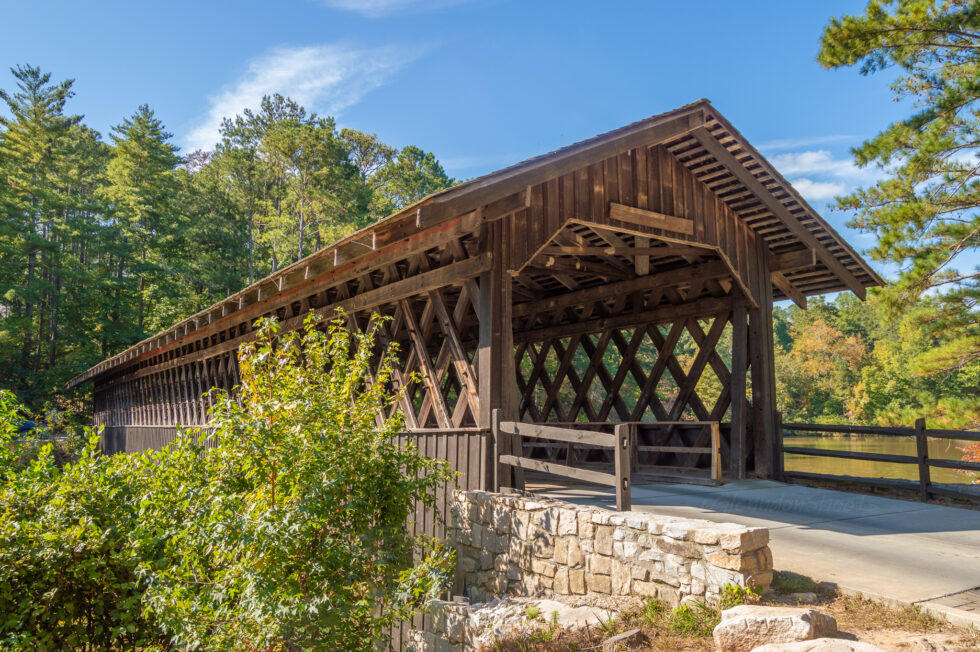
Caption
The Stone Mountain Memorial Association rededicated the Washington W. King/College Avenue Bridge on the back side of the 3,400-acre park.

The Stone Mountain Memorial Association rededicated the Washington W. King/College Avenue Bridge on the back side of the 3,400-acre park.
ATLANTA — Stone Mountain Park, originally created as a Confederate memorial, now features a historic covered bridge named in honor of the 19th century African American who built it.
The Stone Mountain Memorial Association rededicated the Washington W. King/College Avenue Bridge during a ceremony late last week at the site of the bridge on the back side of the 3,400-acre park.
King, the son of a freed slave, engineered, designed and built the bridge in 1891 to cross the Oconee River in Athens, connecting College Avenue and the University of Georgia with the more rural regions of eastern Clarke County.
Floods damaged the wooden bridge on its moorings in 1910 and again in 1961. The bridge was then replaced with a concrete and steel crossing, and the old bridge was set aside on the banks of the Oconee.
The Clarke County Commission later donated the bridge to the Stone Mountain Memorial Association for $1, and it was disassembled and relocated to the park.
“We promised additions here at Stone Mountain Park, and though this bridge has been with us almost from the beginnings of this state park, its story needed retelling and refocus, which is happening here today,” the Rev. Abraham Mosley, the Stone Mountain Association’s board chairman, said during Friday’s rededication ceremony.
The association has successfully submitted the bridge for inclusion on the National Register of Historic Places. The board also has formally renamed the .8-mile trail encircling Indian Island on Stone Mountain Lake as the King Trail.
The bridge and trail are part of a broader plan to deemphasize Confederate imagery at a park dominated by images of Confederate President Jefferson Davis and Confederate Generals Robert E. Lee and Stonewall Jackson carved into the side of the mountain.
The board adopted a new logo for Stone Mountain Park last year that depicts the southern face of the mountain away from the carving.
Work also is underway on a museum exhibit aimed at giving visitors the full context of the park’s history, including its hosting of the rebirth of the Ku Klux Klan in 1915.
Historical markers soon will be in place at both ends of the bridge.
This story is available through a news partnership with Capitol Beat News Service, a project of the Georgia Press Educational Foundation.